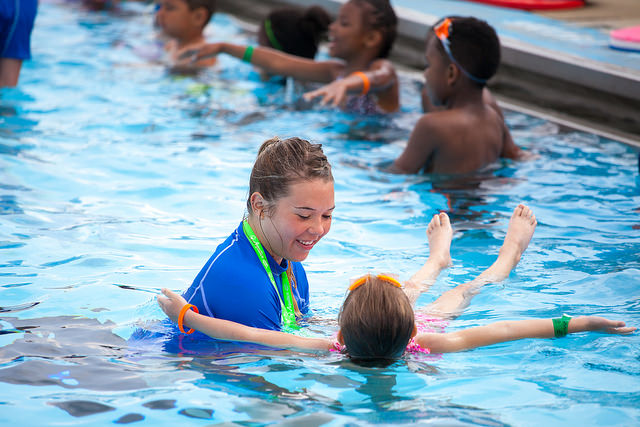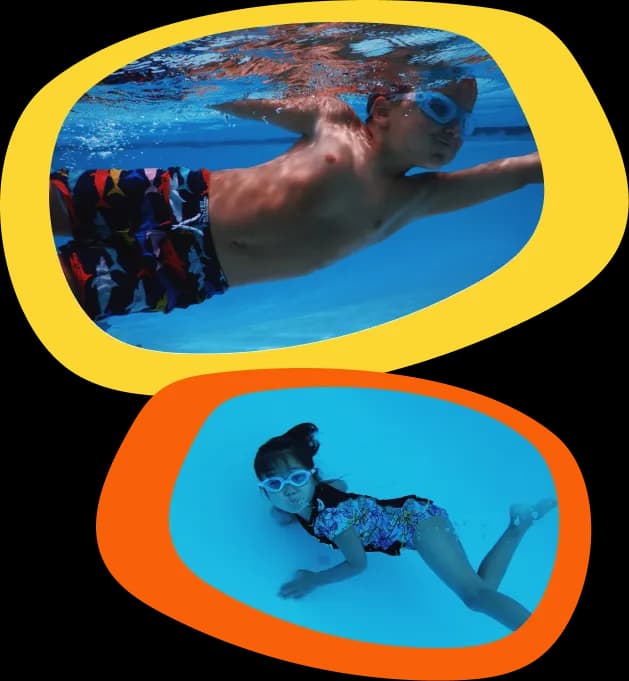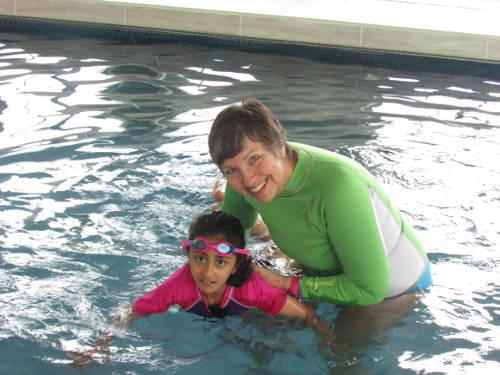What is My Role as a Swimming Teacher?

Written by Sunsational — 6 min read


Hi, fellow teachers, caregivers and parents
Have you ever heard this quote from Piaget?
“When you teach a child something you take away forever his chance of discovering it for himself.” ~ Jean Piaget [1]
Yikes! If that’s true, then what’s my role as teacher of swimming to young children? That’s a great and hard question to answer. The good news is we don’t have to come up with the answer from scratch. Montessori, Piaget, Holt, and many others have great left us with great insights.
Montesorri summarizes these insights by suggesting that the main role of the teacher is to
- 1) prepare the classroom and provide a sense of order,
- 2) encourage independence, and
- 3) free the child to test her abilities within limits. [2]
Then the child chooses what tools to use and how to interact with the environment. She reaches for the teacher when support is needed.
PREPARE THE ENVIRONMENT
Before our students even get in the pool, we explore that environment ourselves—steps, wall, pool lip, surface around the pool—and modify it to fit our need to keep the child safe. For instance, we use towels or cones to mark off the area we will use and remove objects—like floaties—that will not be used in our lessons together.
KEEP THEM SAFE
Our first job is to keep our swim students safe. How do we do that? We’re in the water with them at all times to offer support when they need it. But if they are going to turn to us for help, we must first earn their trust through play, consistency, and openness. Trust is key to safety because our students must turn to us in time of need without any hesitation. Their trust, as much or as the environment or even more so, is key to keeping them safe with us.
PROVIDE A SENSE OF ORDER
The skills chart comes in VERY handy here! Show those skills. Refer to those skills. Practice those skills. Those skills—not the particular order in which we do them—provides a sense of order by providing a backbone—a rich and diverse range of activities to choose from and develop into related skills and play. We encourage their independence when we accept and incorporate new ways of developing those skills—ways we watch them come up with all on their own as they play.
TOOLS AND TOYS
For kids—and maybe for us, too—toys and tools are the same things. But our noodles, kickboards, and diving toys are also essential to providing a sense of order. Luckily, they serve the dual purpose of encouraging independence and freeing the child to explore.
THE MONKEY CRAWL
My experience with the Monkey Crawl provides a great example of how all these elements can come together to create Piaget’s moments of discovery. I recently had a child decide they were done monkey crawling and push back off the walls into my arms—pretty much without warning.
See how all the elements are in play? Trust, freedom, exploration?
Feeling supported, the child lay out on her back as we moved away together—and discovered the back float without me saying a word. My support became the critical part of the environment in that moment so the child felt safe to explore: kicking and even exploring what happened when she used her arms on her back.
Discovery empowered the child and gave her a delightful sense of ownership over a new skill she was ready to explore.
THE NOODLE, FOR INSTANCE
I’m sure you have stories of your own with how a toy or tool led to wonderful moment for a child in the pool. Tools provide both support and a way for a child to test and expand his limits (testing those limits sometimes comes with a mouthful of water—try to accept that as calmly as the exploration).
The noodle is a great example. Children are forever showing me new ways to use it. Loss of control often leads to a child’s first submersion. It’s a great intermediate tool for a child learning to kick to the surface by himself. Its predictable and unpredictable tendencies create opportunities to float, tread water, and blow bubbles. (It’s helpful to point out this difference when compared to floaties.)
PROVIDE ORDER TOGETHER
So what’s our role in all this? To let children discover, to set their own goals, and to keep them safe while they do that. Accept and encourage the choices and discoveries that they make for themselves through action (demonstrate a skill), clarification (“you just did a back float!”), and praise (“I loved how you kicked up and reached for noodle—great job!”).

About the Author: Robert Rogers
Robert is a Sunsational Swim Instructor in Santa Rosa, California.
In his work life, Robert has taught people how to sing, act, and swim—and birds how to fly. Okay, well not exactly. But he did train birds for shows at state fairs, zoos, and Disney’s Animal Kingdom. His only regret is not having learned how to fly himself—yet! You have to crawl before you can fly—or butterfly, right? Favorite animal movie of the moment: EIGHT BELOW!
Book your lesson with Robert or any of our swim instructors!
Share on socials


